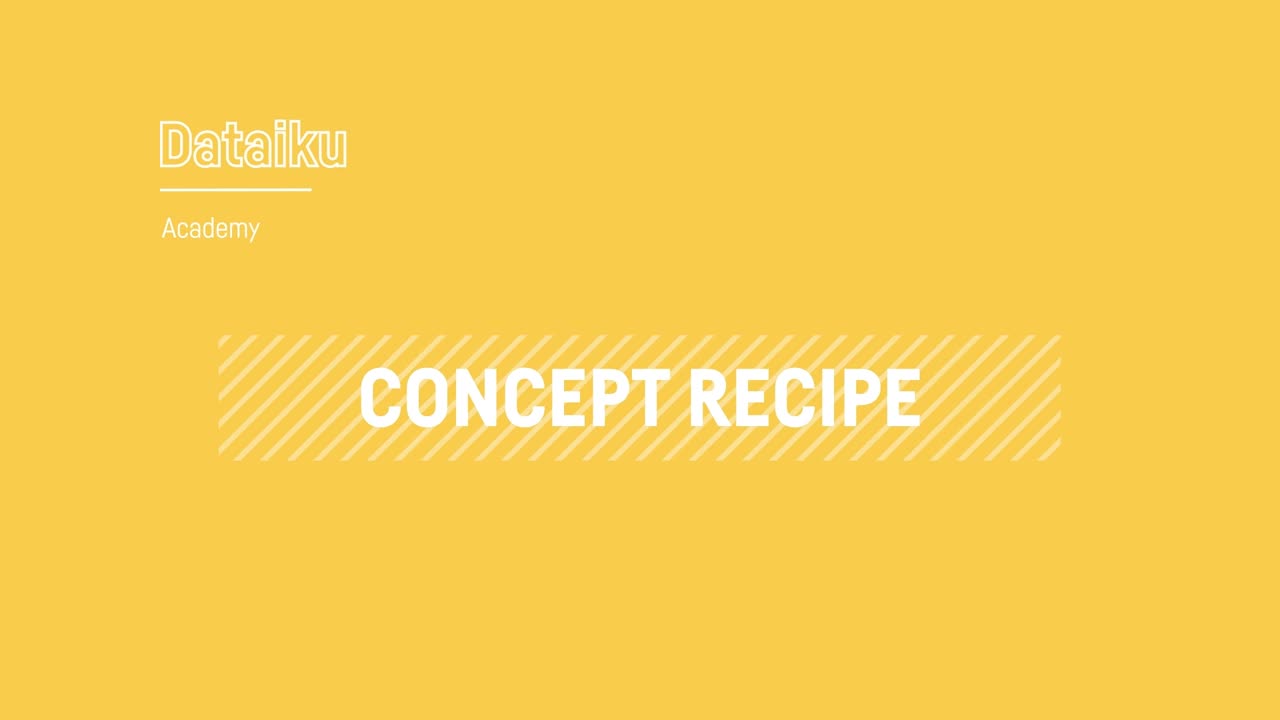Concept | Recipes in Dataiku#
Watch the video

Recipes in Dataiku contain the transformation steps, or processing logic, that act upon datasets.
Recipes in the Flow#
In the Flow, blue squares represent datasets. Circles, on the other hand, which connect datasets to one another, represent recipes.

Keeping the processing logic separate from datasets has a number of benefits:
One is that data storage technologies rapidly change. When this happens, you can change the underlying storage infrastructure of a dataset (for example, switching cloud providers) without impacting the processing logic found in the recipes of a Flow.
Another is a clear sense of data lineage in a project. By looking at the Flow, you can see all actions applied to the data recorded in recipes – from the raw imported data to the final output dataset.
Recipe types#
A circle in the Flow represents a recipe, but its color represents the category of recipe. You can categorize Dataiku recipes as visual, code, LLM, machine learning, or plugin recipes.
Recipe type |
Description |
|---|---|
Visual (Yellow circles) |
Visual recipes accomplish the most common data transformation operations through a pre-defined graphical user interface. Instead of coding data transformations yourself, you can apply a visual recipe to guide tasks such as cleaning, grouping, or filtering data. |
Code (Orange circles) |
Instead of using a pre-defined visual recipe, you are free to define your own processing logic in a code recipe, using a language such as Python, R, or SQL. |
LLM (Pink circles) |
GenAI recipes leverage Large Language Models to facilitate tasks such as prompt engineering, classification, summarization, or retrieval augmented generation (RAG). |
Machine learning (Green circles) |
Machine learning recipes train or apply machine learning models to data, such as prediction and clustering. You can also evaluate the performance of a model on a dataset with the Evaluate recipe. |
Plugin (Red circles) |
Plugin recipes are a way for coders to extend the native capabilities of Dataiku through plugins. If code recipes give you complete freedom, and visual recipes can be understood by everyone, a plugin, once installed, combines these benefits by wrapping a visual interface on top of a code recipe. |
Next steps#
In this article, you learned about recipes and how they can be used to keep processing logic separate from datasets used in a Dataiku project. Continue getting to know the basics of Dataiku by learning about the Prepare recipe.
Tip
You can find this content (and more) by registering for the Dataiku Academy course, Visual Recipes. When ready, challenge yourself to earn a certification!

